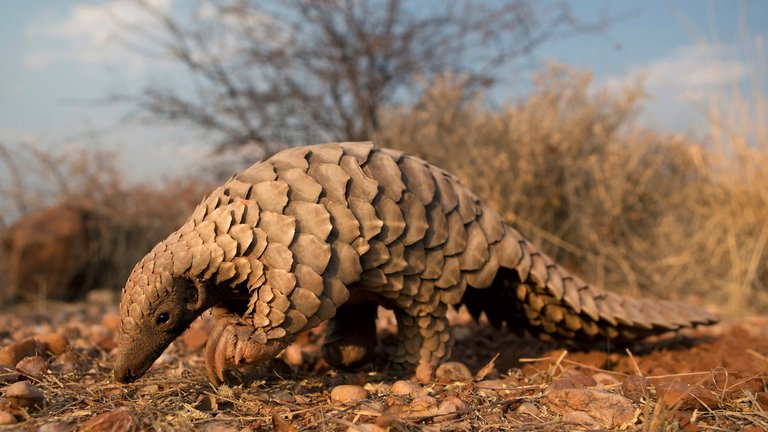Meet the Pangolin. Also known as the African Pangolin, Pangolines are indigenous to the rainforests of central and eastern Africa, where they are one of the largest nocturnal mammals. Pangolines are highly social animals that remain in close bonds with other members of their species even during times when they are not active. In fact, many of these animals spend their days basking in the sun by day and sleeping soundly at night by a tree or under a rock by night.
Meet the Pangolin's predators, too. The primary prey of African pangolins include larger animals such as hyena, vole, lion, black rhino, cheetah, buffalo, zebra, etc. Four of the eight known pangolines species are found in Africa, and four more are seen in Asia.
Like most nocturnal animals, pangolines have scales that cover their entire bodies. However, unlike most nocturnal animals, the scales on the face of pangolines are highly irregular in shape, ending in small, rounded scales along the sides of the body. While these scales give the animal a beautiful, unique look, the irregular shape of the scales serves an important practical purpose. These scales help prevent the animal from being attacked by other animals that want to eat it. These scales also serve to confuse the predator so that it will not want to target the nocturnal creature.
Most people believe that the pangolin is actually a member of the cane fern family, which is why it has the black-bellied appearance. However, there is one very important difference between this animal and its more common relatives. While most families have a common ancestor that lives primarily on the ground, the black-bellied pangolin (Caneus pretens) evolved on the ground. This means that this animal must have a special adaptation that allows it to live on the ground, like the spotted rat or the tuatara. Though pangolines do share many characteristics with both arboreal and aquatic species of the fern family, they differ greatly in their anatomy, development, size, and behavior. This is what gives pangolin ownership problems.
Like most animals, the African pangolin has a series of bone decorations on its body that serve to give it a unique appearance. The most conspicuous of these decorations are its thick and horny fingernails. Although these fingernails are covered with a tough, horny substance, these fingerlike decorations are actually hollow, with little bone inside of them. When the animal pulls hard on its claws, it digs into the earth to make room for the nail, causing the decoration inside to come out. These "dent" filled fingerbones make the animal's nails extremely useful for gripping and grasping.
Unlike most African pangolins (which are actually quite adaptable in terms of claw type, size, shape, and usage), the white-bellied pangolin has a completely different set of bone decorations. Its fingernails lack any kind of decoration, and its entire lower jawbone is essentially covered in a series of thick, white rings. The reason that the white-bellied pangolin looks different than other species of this animal is due to its unique reproduction system. Unlike most animals that can produce one or two eggs at a time, this creature can produce up to fifty eggs in a single day! This adaptation helps the animal survive as a solitary hunter.
Pangolin tails are long and skinny, allowing these creatures to hide in thick vegetation and stay out of sight for long periods of time. Their short bodies also make them excellent climbers, capable of scaling tree branches and even rock walls without much effort. A pangolin's tail is covered in rows of razor sharp spikes, which is what allows the animal to grab its prey using only its claws.
There are currently eight known species of this incredible mammal. These animals are classified as omnivores, with carnivores occupying the majority of their diet. Pangolin diets include insects, small fish, carrion, and berries. Overall, they are carnivores, with the exception of arboreal species that feed on plants. Due to their unique physiology, all eight pangolin species are categorized under this subspecies alone.


